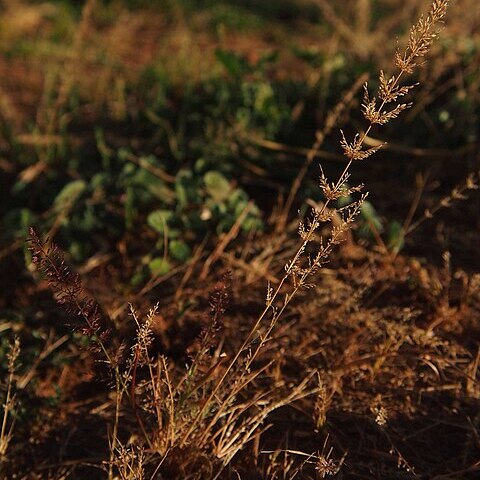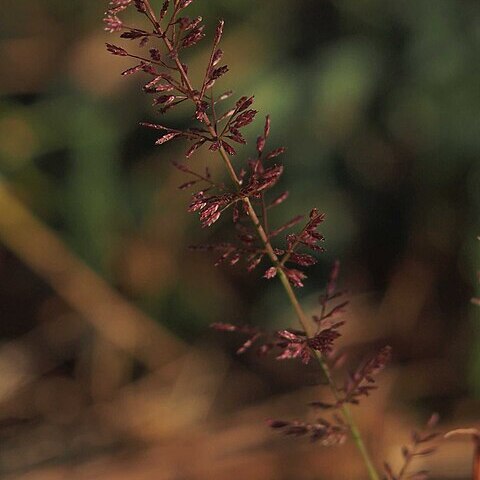Tufted annuals. Culms erect to semiprostrate, 6–15 (–96) cm high, sometimes fastigiate. Leaves smooth or scaberulous; sheaths overlapping; ligule a fimbriate membrane, 0.2–0.6 mm long; blade flat or loosely rolled, to 30 cm long, to 6 mm wide, with thick white scaberulous margins. Panicles open, decompound, often drooping, oblong or pyramidal, 6–15 (–50) cm long, 1.5–5 (–10) cm wide, scabrous; branches sometimes whorled, divided, naked near axil. Spikelets pedicellate, linear, compressed, 2–4.7 mm long, 0.9–2 mm wide; rachilla straight, slender; florets 3–12, loosely overlapping; terminal floret vestigial. Glumes deciduous, unequal or ±equal, ovate, hyaline; lower glume 0.5–1.1 mm long; upper glume 0.7–1.3 mm long. Lemma ovate, 0.7–1.1 mm long, obtuse, almost hyaline. Palea hyaline; body spathulate; keels short and incising palea into 3 lobes, smooth or partly scaberulous; flaps narrower than body in upper part and wider in lower part. Stamens 2; anthers c. 0.2 mm long. Grain not compressed, ellipsoid-ovoid, subulate, 0.3–0.7 mm long, glossy, dark reddish brown.
More
A strong tufted grass. It keeps growing from year to year. It grows 30-80 cm high. The stems are tough. The leaves are long and have a fine point. There are stripes on the sheath and blades. The stems are restricted at the nods. The flowering shoot is a panicle 20-40 cm long. There are many fine branches. The spikelets are very small.
Usually in seasonally flooded sites, often in grassland plains. Grows in heavyclay loams, either alluvial or derived from basalt, laterite, limestone orsandstone.
More
A tropical plant. It grows on sandy soils. It is usually on heavier soils and on the wetter edges. It grows in tropical and subtropical places.
By coasts and around salt marshes in Victoria.


